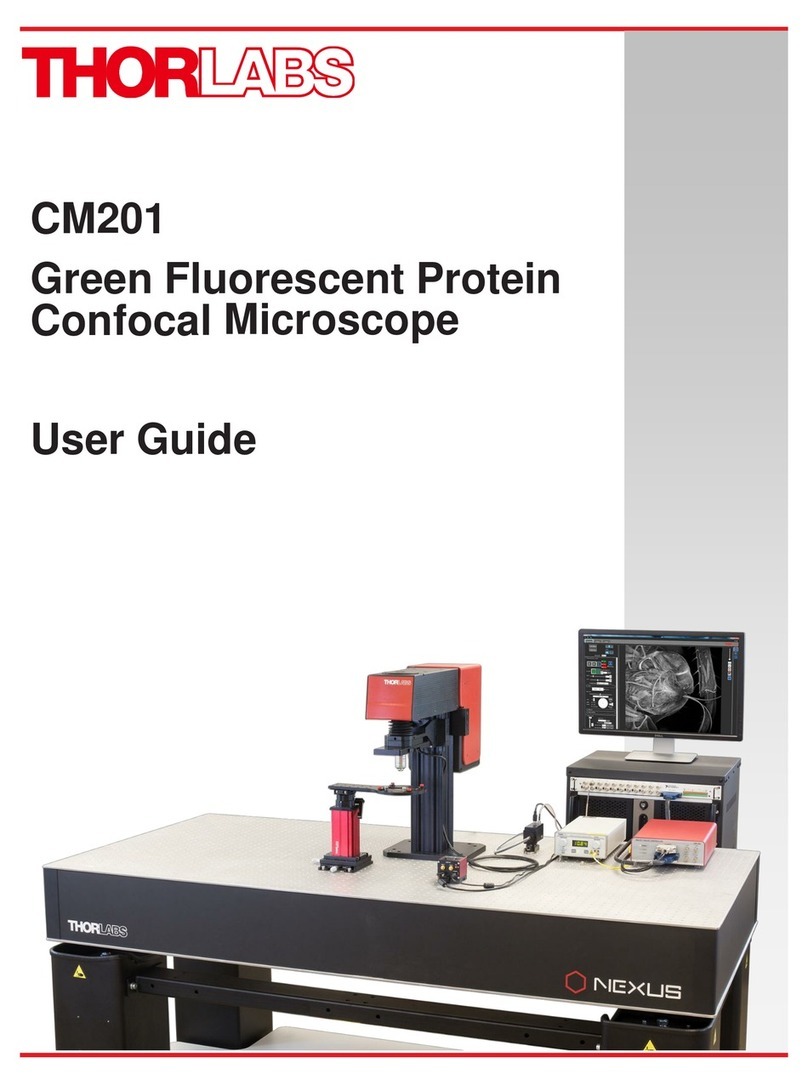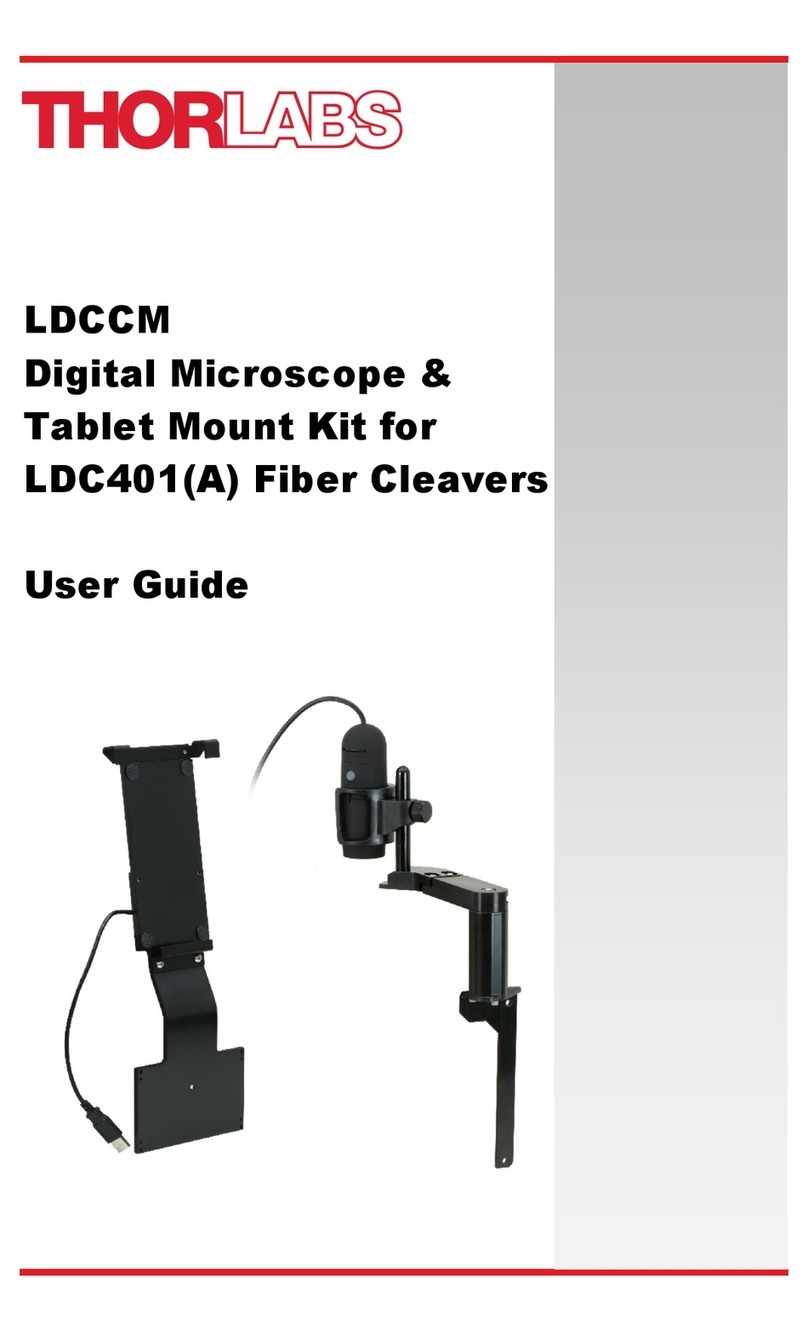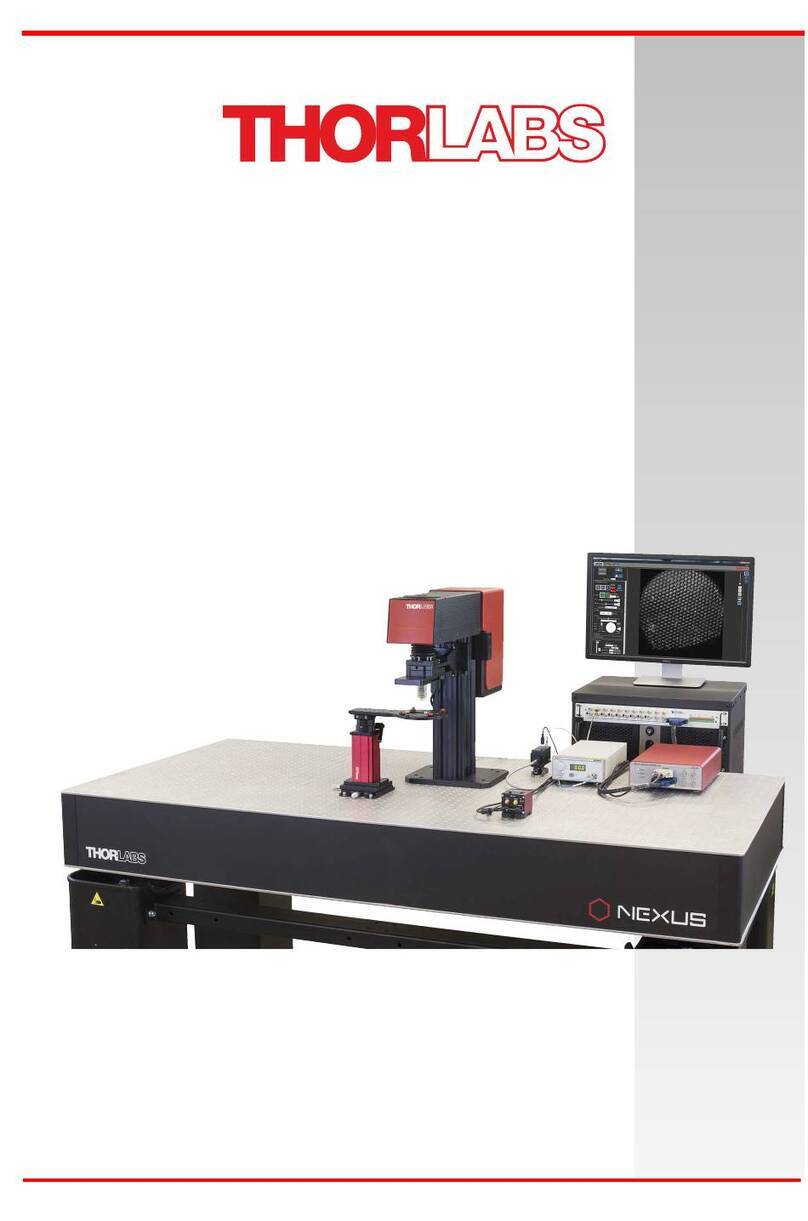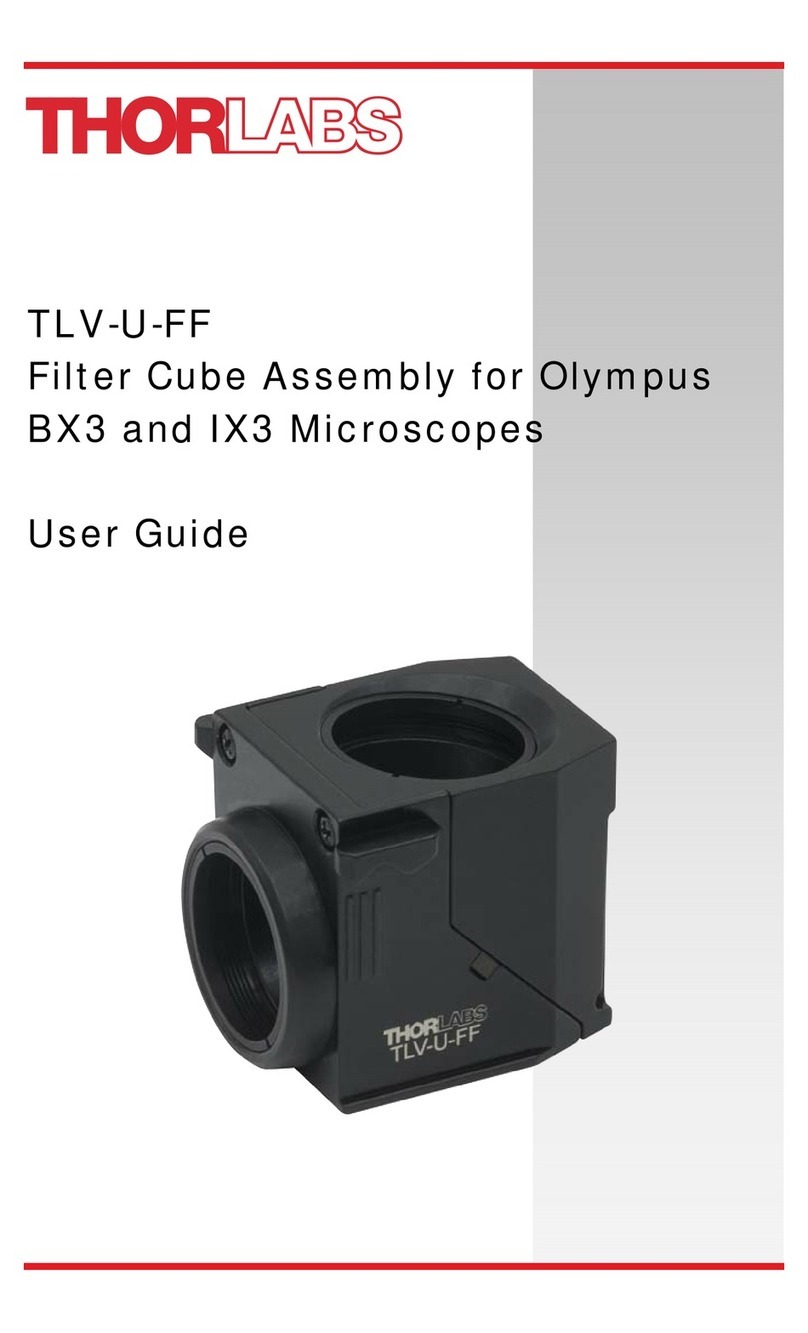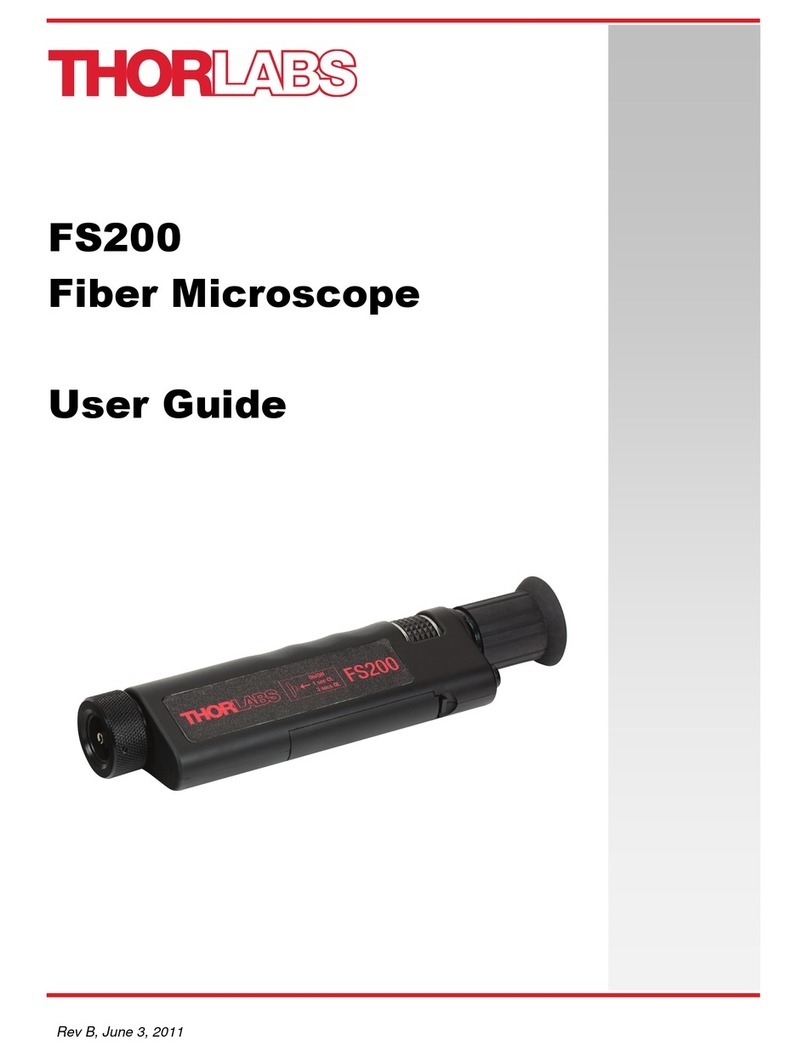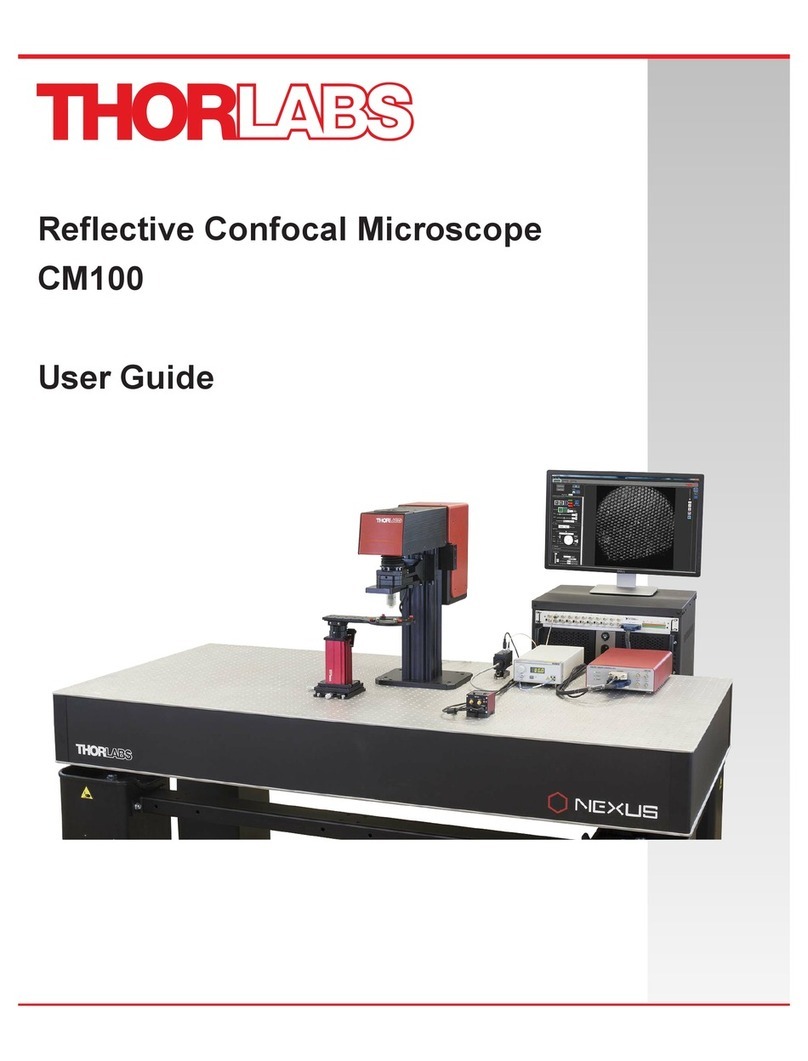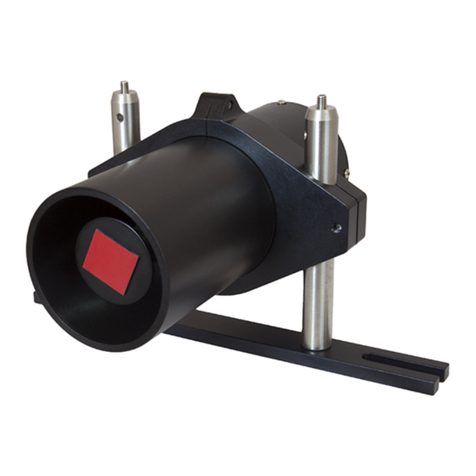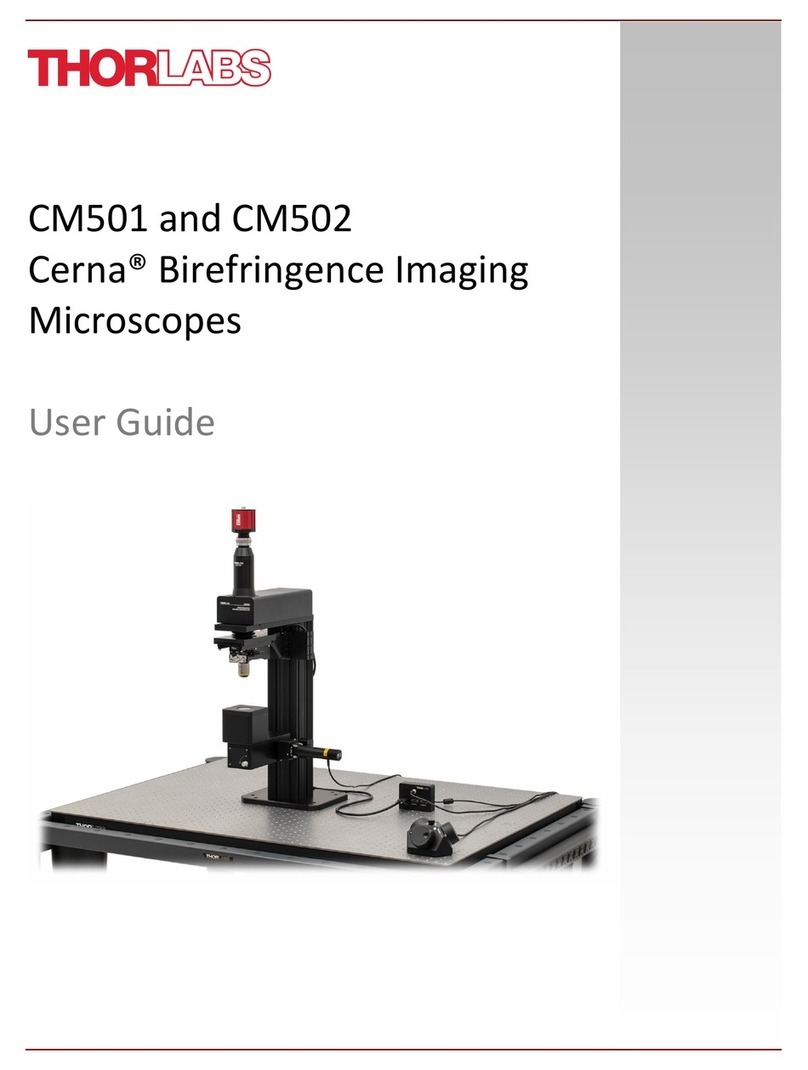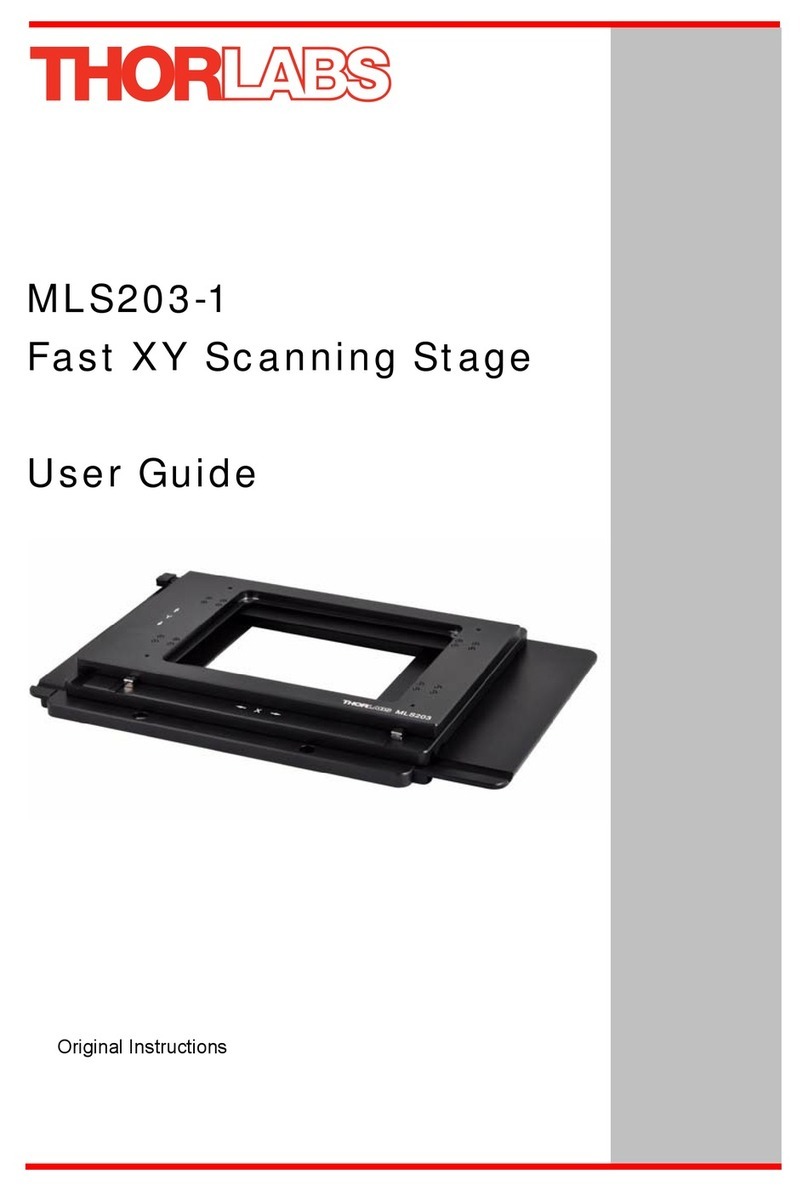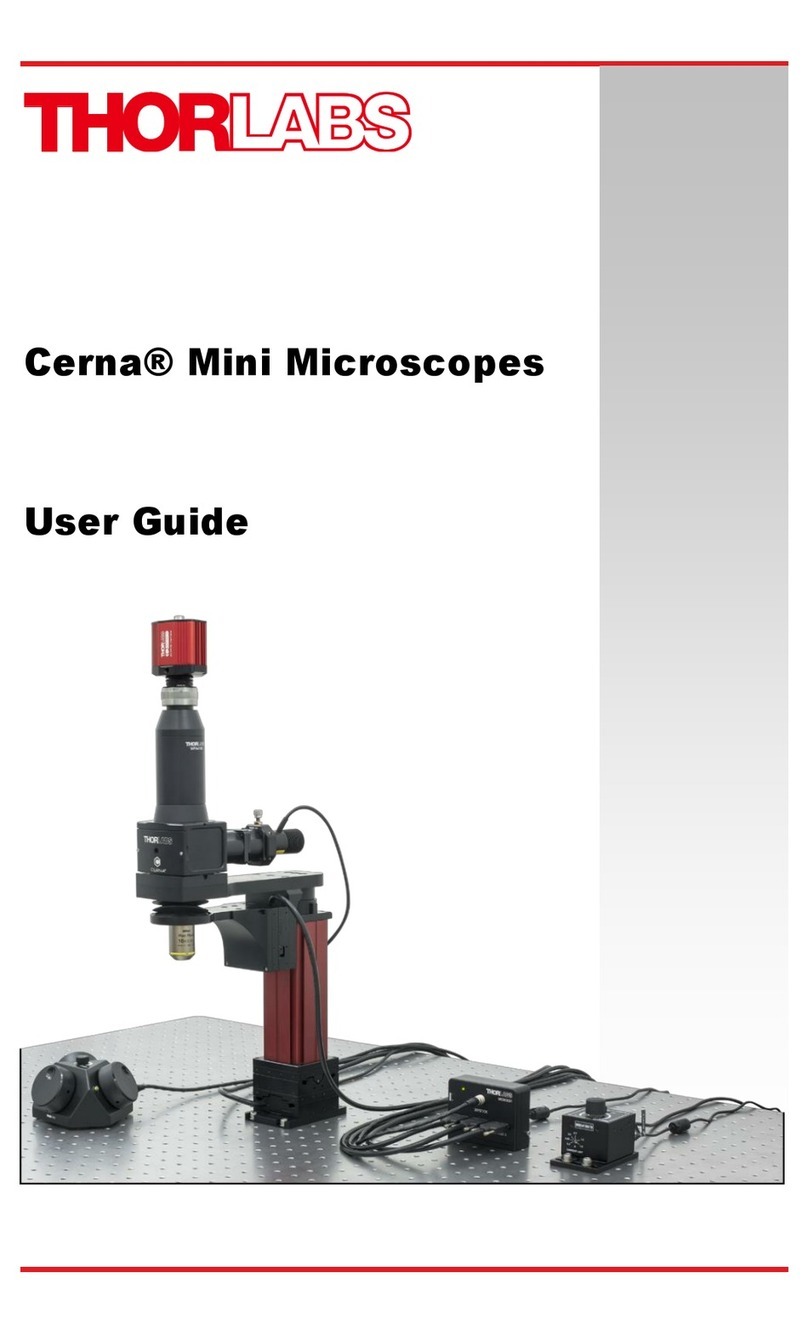
4
Chapter 1 For Your Safety
1.3 General Precautions Relating To LED Safety
Warnings.
• Inappropriate use of any Thorlabs High Power LED product could result in permanent
eye damage.
• To prevent injury, these products must be used in accordance with the International
Standard "Photobiological Safety of Lamps & Lamp Systems" CEI IEC 62471
• When Thorlabs high power LED's are used in microscope applications as a replacement
for Mercury Vapor lamps, the same precautions should be taken as those applying to
Mercury Vapour lamps.
• When Thorlabs High Power LED's are used in other applications, they should be used in
accordance with CEI IEC 62471.
Cautions
• During normal operation, the casing temperature of Thorlabs High Power LED products
will rise by up to 25 C (45F) above ambient temperature.
• To prevent higher case temperatures, the products should be operated without hindrance
to air movement surrounding the convective cooling fins.
1.4 Declarations Of Conformity
1.4.1 For Customers in Europe
This equipment has been tested and found to comply with the EC Directive
89/336/EEC ‘EMC Directive’.
Compliance was demonstrated by conformance to the following specifications which
have been listed in the Official Journal of the European Communities:
EMC EN61326: 1997
1.4.2 For Customers In The USA
This equipment has been tested and found to comply with the limits for a Class A
digital device, pursuant to part 15 of the FCC rules. These limits are designed to
provide reasonable protection against harmful interference when the equipment is
operated in a commercial environment. This equipment generates, uses and can
radiate radio frequency energy and, if not installed and used in accordance with the
instruction manual, may cause harmful interference to radio communications.
Operation of this equipment in a residential area is likely to cause harmful interference
in which case the user will be required to correct the interference at his own expense.
Changes or modifications not expressly approved by Thorlabs Ltd. could void the
user’s authority to operate the equipment.
